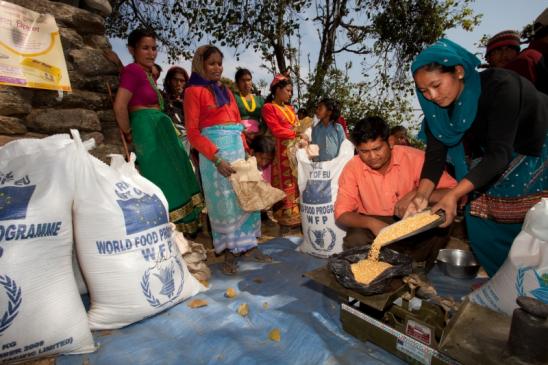Recent update by the World Food Program
Sharing the latest report on the food security impact of the 2015 earthquake – which highlights the findings of a household food security assessment as well as District Food Security Network meetings carried out 8-20 May to inform the food security response for the Nepal 2015 earthquakes. The assessments were carried out with overall coordination from the Government’s Nepal Food Security Monitoring System (NeKSAP) with technical support from WFP and the Food Security Cluster.
A major concern for both immediate and longer term food security are widespread losses of household food stocks. In the most food insecure areas, 80 percent of households have lost their entire food stocks, and overall 55 percent of households have lost more than half of their cereal stocks. Using baseline data on average food stocks available at this time of the year, this translates into an estimated total of 52,000 MT of lost grain stocks.
Food assistance has played a critical role in ensuring that food insecurity does not escalate further: food assistance is the main source of cereals and pulses for close to 40 percent of surveyed households. While reaching remote, highly affected areas with no road access has been very challenging, humanitarian agencies are now using helicopters and porters to access these “unreachable” areas.
The earthquake has severely impacted food security, with an estimated 1.4 million people in need of food assistance (excluding Kathmandu Valley). The majority of these live in the most heavily damaged areas along the seismic belt (1.1 million people), with the remaining living in the severely affected but sparsely populated remote mountain areas (90,000 people), and in the less severely damaged but highly dense southern areas (250,000 people).
Food security has deteriorated in all affected areas, and is particularly worrying in remote mountain areas, where close to 70 percent of households have poor or borderline food consumption, and close to half have poor diet diversity. Households across all affected areas are resorting to negative food-based coping strategies, particularly reducing portion sizes and meal frequency.
Crop production and livestock rearing are the primary livelihoods for almost two thirds of households in the affected areas. While damage to fields and standing crops have been less severe than originally expected (22 percent of households lost more than half of their standing crops), widespread seed losses and damage to agricultural tools are a major concern. Households dependent on daily labour and trade have been amongst the most affected in terms of income, with over two thirds reporting income losses of over 30 percent since the earthquake.
Food markets are now largely functional in less affected areas and are fast recovering in the seismic belt. In remote mountain areas, however, markets remain mostly closed or difficult to access for both suppliers and households, due to destroyed roads or landslide risk. The upcoming monsoon is likely to exacerbate market access constraints in these areas.
We hope that we can count on your support. Thank you. DONATE NOW to the HDFA
Read the full report


.jpg)

